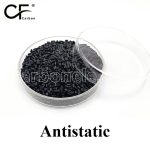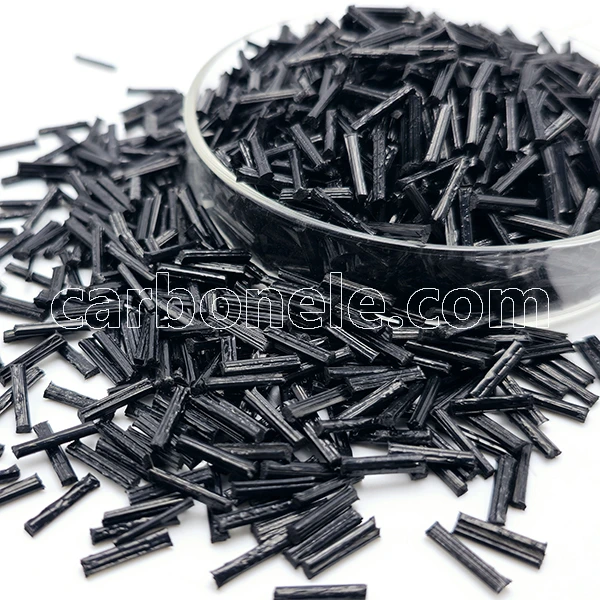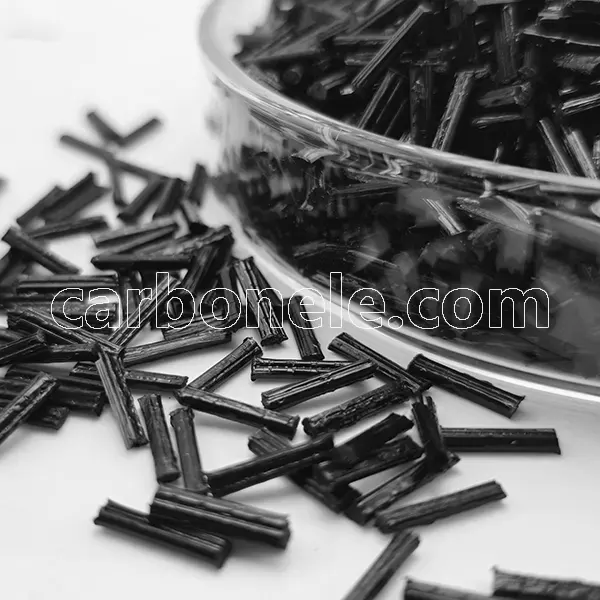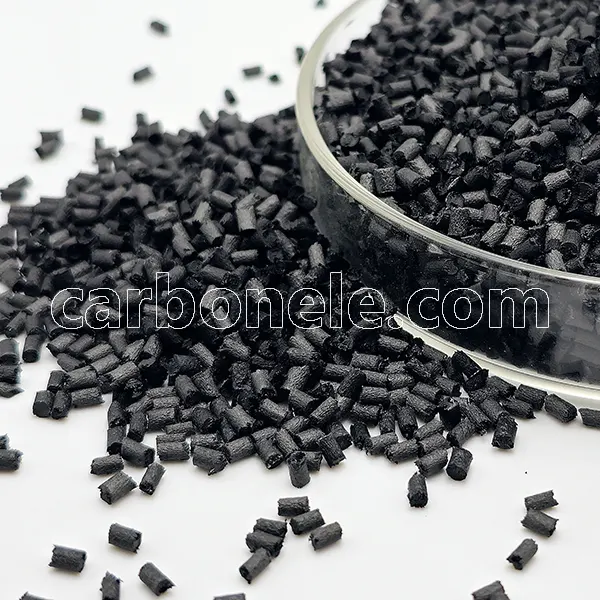Different Between PA66-CF10 And PA66-CF30 - Carbon Fiber Compounds Manufacturer | Supplier
PA66-CF10 and PA66-CF30 are both carbon fiber reinforced Nylon 66 materials, with 10% and 30% carbon fiber content respectively. The higher carbon fiber content in PA66-CF30 provides significantly greater strength, stiffness, thermal stability, and dimensional accuracy compared to PA66-CF10, making it ideal for load bearing and high-heat applications. In contrast, PA66-CF10 offers a good balance between mechanical performance, processability, surface finish, and cost, making it suitable for medium duty applications where appearance and ease of molding are also important.
In Depth Comparison of PA66-CF10 and PA66-CF30: Material Performance, Applications, and Selection Guidelines
Polyamide 66 (PA66), also known as Nylon 66, is one of the most widely used engineering thermoplastics. It is valued for its high mechanical strength, excellent wear resistance, chemical stability, and thermal performance. However, in demanding applications, unmodified PA66 may not always meet structural or thermal stability requirements. To overcome these limitations, PA66 is often reinforced with carbon fibers, resulting in high performance materials such as PA66-CF10 and PA66-CF30.
These two grades differ significantly due to the varying carbon fiber content. This article provides a detailed comparison between PA66-CF10 (10% carbon fiber) and PA66-CF30 (30% carbon fiber), examining their mechanical, thermal, processing, and economic characteristics, along with guidance on how to choose the right one for your application.
1. What Do PA66-CF10 and PA66-CF30 Mean?
PA66-CF10: A composite material made from PA66 reinforced with 10% carbon fiber by weight.
PA66-CF30: A more heavily reinforced variant with 30% carbon fiber by weight.
The added carbon fiber enhances the base PA66’s properties—primarily mechanical strength, stiffness, dimensional stability, and thermal conductivity—though it also affects processing and surface finish.
2. Mechanical and Thermal Property Comparison
| Property | PA66-CF10 | PA66-CF30 |
|---|---|---|
| Carbon Fiber Content | 10% | 30% |
| Tensile Strength | Improved by ~30–50% over neat PA66 | Improved by up to 100% |
| Flexural Strength | Good | Very high; excellent for structural parts |
| Modulus of Elasticity | Increased stiffness | Very high rigidity; almost like a metal |
| Impact Resistance | Slightly decreased compared to neat PA66 | Further reduction; may require toughness modifiers |
| Thermal Conductivity | Slightly better than PA66 | Significantly improved |
| Heat Deflection Temp | Moderate increase | Substantial increase (up to ~250°C depending on formulation) |
| Thermal Expansion | Reduced thermal expansion | Very low thermal expansion; near metallic behavior |
| Creep Resistance | Good | Excellent |
3. Dimensional Stability and Warpage Control
One of the most notable differences between the two grades is dimensional stability.
PA66-CF10 provides improved dimensional accuracy over unfilled PA66, with reduced shrinkage and warpage, making it suitable for precision molded components.
PA66-CF30 offers exceptional dimensional stability, making it ideal for components exposed to mechanical loads or heat over long periods. Its low coefficient of thermal expansion (CTE) is especially beneficial in applications where tight tolerances are critical.
4. Surface Quality and Aesthetic Considerations
PA66-CF10 generally provides a better surface finish. With lower fiber content, the surface is smoother and more suitable for aesthetic parts.
PA66-CF30 often results in a rougher surface, with carbon fibers more likely to appear on the surface during injection molding. Post processing (painting, coating, or polishing) might be necessary for visual components.
5. Processing Behavior and Moldability
Processing challenges increase with higher carbon fiber content:
| Feature | PA66-CF10 | PA66-CF30 |
|---|---|---|
| Melt Flow | Good flowability | Lower flow; requires higher pressure |
| Tool Wear | Moderate (due to abrasive CF) | High (significant tool wear over time) |
| Shrinkage | Low shrinkage | Very low shrinkage |
| Drying Required | Yes (as with all polyamides) | Yes (even more important at higher CF) |
| Cycle Time | Moderate | May be longer due to reduced flow |
6. Cost and Sustainability Considerations
PA66-CF10 is generally more cost effective. It offers a good balance of enhanced properties without significantly increasing material or processing costs.
PA66-CF30 is more expensive, both in terms of raw material and tooling maintenance. However, it may reduce the need for metal components, leading to long term cost savings in lightweighting applications (especially in automotive and aerospace).
From an environmental standpoint, carbon fiber composites are not easily recyclable, so lifecycle planning is important.
7. Typical Applications
PA66-CF10:
Automotive interior and semi structural components
Consumer electronics housings
Tool handles, enclosures, light brackets
Parts requiring moderate reinforcement but good appearance
PA66-CF30:
Engine compartment parts (e.g., brackets, pulleys, supports)
Structural components under high stress
Gear housings, mechanical levers, load bearing parts
Parts requiring thermal dimensional stability under load
8. How to Choose Between PA66-CF10 and PA66-CF30
| Criteria | Recommended Grade |
|---|---|
| Moderate strength & stiffness | PA66-CF10 |
| High structural load requirements | PA66-CF30 |
| Good surface finish needed | PA66-CF10 |
| Tight dimensional tolerances | PA66-CF30 |
| Cost sensitive applications | PA66-CF10 |
| Extreme heat and mechanical stress | PA66-CF30 |
| Lightweight metal replacement | PA66-CF30 |
9. Conclusion
Both PA66-CF10 and PA66-CF30 offer enhanced properties over standard PA66, but they serve different purposes:
PA66-CF10 is suitable for applications requiring moderate mechanical enhancement and good processability, while maintaining a reasonable cost and surface appearance.
PA66-CF30 is ideal when maximum strength, rigidity, and dimensional stability are required, especially in demanding structural or thermal environments, albeit at higher cost and processing complexity.
Selecting the right grade depends on your application’s specific performance, budget, and manufacturing constraints.
If you want to get more information about PA66-CF, you can vist our Youtube.
Previous News
What’re the Differences Between PA66 CF30...Next News
Different Between PA66-CF10 and PA66-LCF10
Feature Product
-
PA12 LCF30 for Drone Fuselages & Wings
What do you know about PA12 LCF30? PA12 ...
-
Competitive Price PA6 LCF30 Composites
What’s it? PA6 LCF30, which stands...
-
ABS CF10 Compound ABS 10%CF Thermoplastic Compo...
What’s ABS CF10? ABS CF10 refers t...









